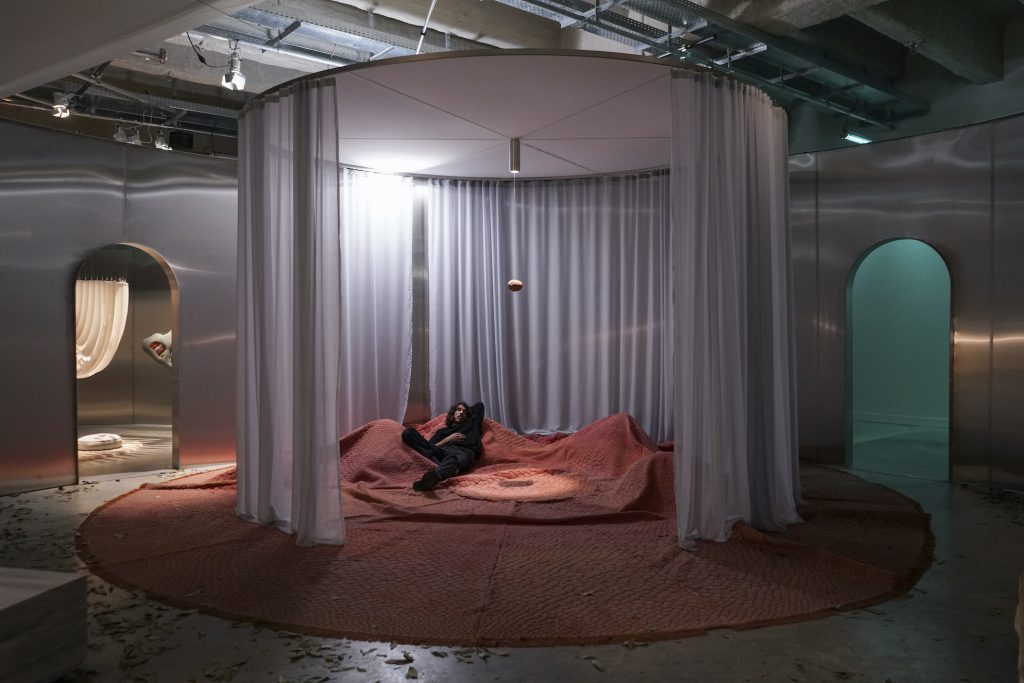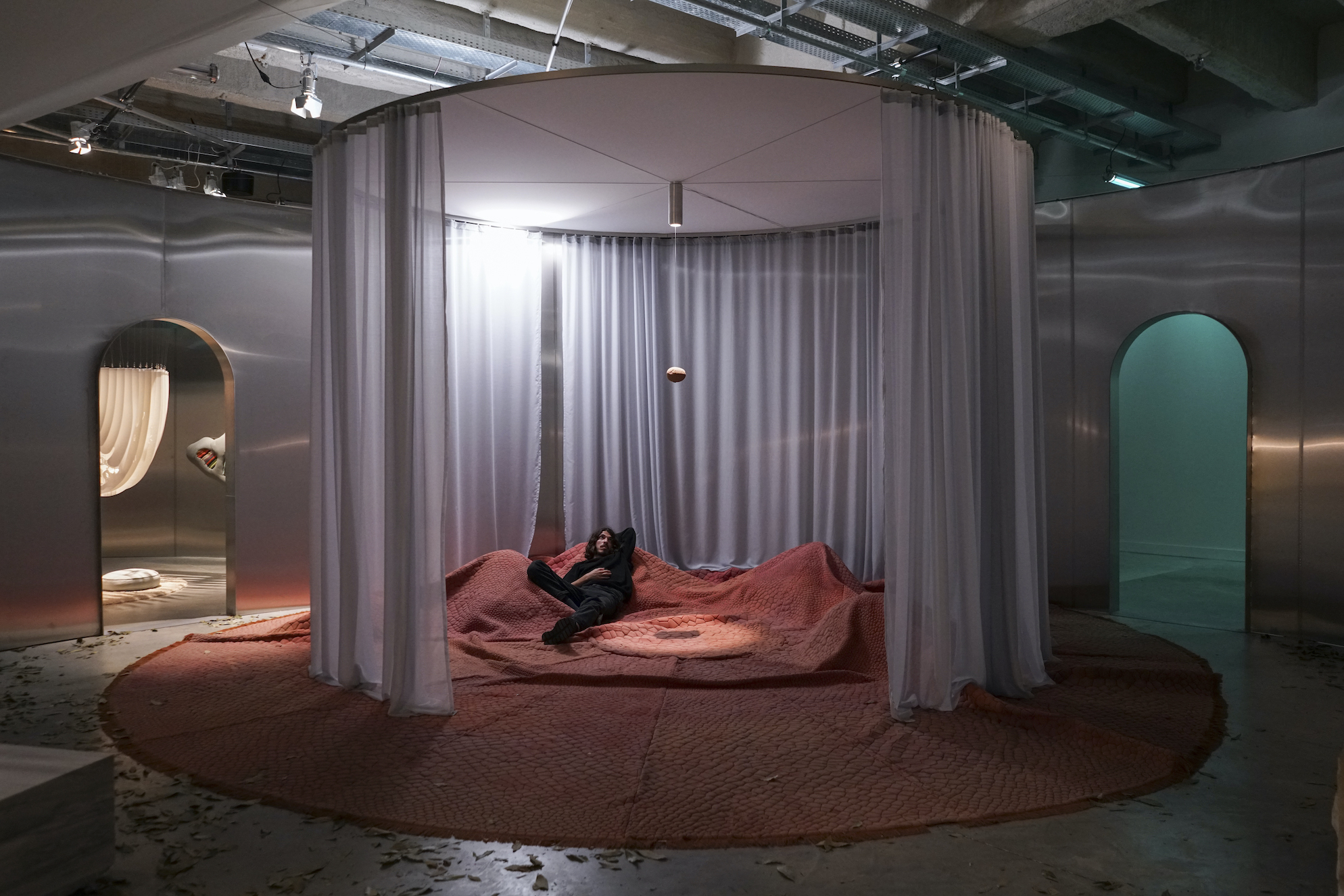
Cindy Ji Hye Kim Explores the Rhythms of Nature Through Her Art

Exploring Ancient Rhythms in a Digital Age: Cindy Ji Hye Kim’s “Animal Triste”
In the heart of industrial Los Angeles, Cindy Ji Hye Kim’s 2025 exhibition, Animal Triste, invites viewers to step away from their screens and fluorescent-lit days into a symbolic universe intricately tied to agrarian life, seasonal transformation, and ancient ritual. Shown at the François Ghebaly Gallery, the exhibition delves into the psychic and somatic relationship between the body and the land, reflecting Kim’s fascination with premodern time cycles, natural labor, and collective memory.
Reimagining Medieval Calendars
The thematic backbone of Animal Triste centers on medieval calendars — timekeeping tools that marked months not by numbers or business appointments but by toil, harvest, and celestial change. These agrarian calendars functioned as both functional guides and cultural scripts, linking the human body to Earth’s rhythms in ways now obscured by modern schedules.
Kim channels this historical framework through her unique visual language, fusing a monochrome palette with surreal, figurative forms that feel simultaneously contemporary and archaic. Her work challenges us to consider how estranged modern existence has become from nature’s cycles, urging a reconnection through art that is both narrative and intuitive.
The First Room: Iconography of Winter and Waiting
Visitors first encounter a series of noir, small-scale portraits in the opening room — intimate works that play on the tension between darkness and illumination. In the titular piece, “Animal Triste,” a woman embraces her lover, the glow from within her ribcage acting as a lantern against winter’s symbolic stillness. These scenes capture a stark psychological landscape, representing late winter as a time of internal quietude, preparation, and suspended breath before spring’s awakening.
Another piece, “Awakening,” offers a literal and metaphorical threshold — a dichotomy of cool interior domesticity juxtaposed with the nearing warmth of spring. The visual language here leans into subtle contrasts: warm vs. cold, internal vs. external, stasis vs. growth.
Introspection gives way to emergence — mirroring the seasonal transition from dormancy to regeneration.
Second Room: Rebirth, Labor, and Archetypes
Crossing into the second room, visitors are greeted by patterned birch wood panels reminiscent of Korean folding screens, etched with cherry blossoms. The installation, titled “Primavera,” calls forth spring’s arrival. But this is no airy celebration. Rather, Kim presents spring as a crucible of labor, rebirth, and myth-making. The sculptural environment brings to mind the agricultural rituals of early societies and the mythological roles assigned to different gender identities.
In pieces like “Human Design” and “Fixed Sun,” men are captured mid-labor, scythes aloft, echoing centuries-old depictions of masculine toil. Their poses are rigid, almost statuesque, distilled into archetypes of power, aggression, and repetition. These are not individuals but functions — roles written into the landscape of time.
In contrast, works like “Buried Fire” and “The Other-Half of Eve” delve into the feminine psyche through symbolic forms: the moon as cyclical timekeeper, the serpent as both danger and wisdom, and birth as transformation. A recurring falcon, as seen in “The Falcon and the Falconer III,” offers a throughline between freedom, predation, and vision — perhaps a metaphor for artistic sight.
The Feminine and the Collective
Kim’s work resists traditional dichotomies by creating dialog between male and female archetypes — labor against nurture, sun against moon, scythe against seed. In doing so, she reframes them not in conflict, but in continuity. Far from a literal telling of ancient gender roles, Animal Triste invites a reconsideration of the collective unconscious: the stories, seasons, and symbols that persist beneath our digital and urban lives.
The exhibition critiques the Cartesian split between mind and body, human and nature. Kim’s figures, myths, and materials all suggest that to heal our dislocation from nature is to reembrace bodily labor, community narrative, and an emotional understanding of time.
Materials and Technique
Technically, Kim’s blend of acrylic, charcoal, oil, pastel, and graphite on silk and canvas reveals a layered, tactile approach. Her choice to shape canvases over birch stretcher bars and use machine-etched surfaces gives the work a sculptural dimension. Even still forms suggest motion frozen mid-breath — as if the viewer caught labor or intimacy in its most essential essence.
Why “Animal Triste”?
The title, Animal Triste, takes its name from the Latin phrase, “Post coitum omne animal triste est” (“After sex, all animals are sad”). This idea of fleeting pleasure, the melancholy of cycles, and the inevitability of decline after ecstasy imbues the show’s emotional tone. It’s a quiet ode to humans as creatures bound